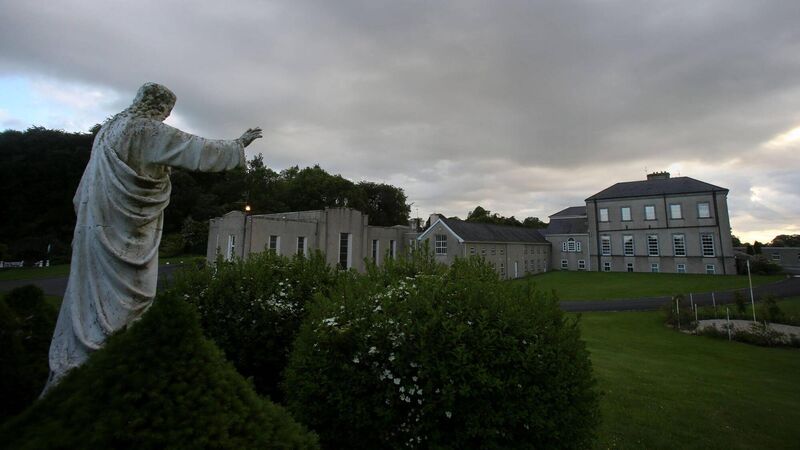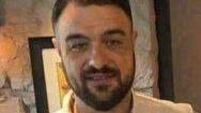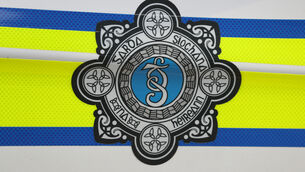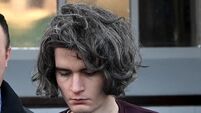Alison O'Reilly: Colleen's return to Ireland for a third shot at life

The Sean Ross Abbey in Roscrea, which was mother and baby home from 1930 to 1970. The number of children's deaths here is higher than the number of registered deaths in Tuam where 796 children died, as well as the 817 in Bessborough in Cork. Picture: Niall Carson/PA
Not many can say they are living their third life — but for Colleen Anderson, moving back to Ireland was a chance to heal from an abusive adoption.
Colleen's first life began when she born on August 4, 1965 in Sean Ross Abbey in Roscrea, Co Tipperary, to her then 14-year-old mother, who became pregnant as a result of being raped.
Her second life started after she was sent to America by the nuns when she was nearly three, to a family who lacked the capacity to care for her properly.
The third stage of Colleen's life is depicted in a new film, by award-winning producer Margo Harkin, which will open in the Lighthouse Cinema for the Dublin International Film Festival on Thursday, March 2.
Christened Josephine, the pretty little girl was adopted to the niece of the institution’s head nun Sr Hildgarde McNulty, who was depicted in the Oscar-nominated movie, .
The film — starring Judi Dench — shows how Sr McNulty stopped Philomena from reuniting with her dying son Michael Heiss (born Anthony Lee) after he travelled from the US to the Co Tipperary mother and baby home, in a last-ditch attempt to find his mother.
Josephine was officially adopted into the Anderson family home in Park Ridge in Chicago, Illinois, and re-named Colleen.
Colleen has described the adoption as “horrific”.
She was left "bruised and battered" many times, eventually running away. She recalled presenting in schools on more than one occasion bleeding from the head after her adoptive mother pusher her against a wall.
She said she always knew she was adopted, because the threat of being sent back to the “dark hell hole that you were born in” was used against her by her adoptive mother from the age of five.
She was hit with high heels, a broom handle, and her adoptive mother’s fists repeatedly.
By the time she was 14, the distressed teenager was regularly found sleeping on park benches, bushes, and in people’s sheds.
Her adoptive father was a kind man but lived in fear of his violent wife, so he never spoke up to intervene when Colleen, now 57, was being beaten.
Her sister, who was the natural-born only child of her adoptive mother and father, never had a hand laid on her. At 16, Colleen’s sister was diagnosed with schizophrenia like her mother, and later died in a hospital with her by her beside.
“I forgave my mother and father before they died, they did say sorry in the end but it meant very little,” she said, but added:
Like many children adopted from the mother and baby homes, Colleen was supposed to be “grateful” for this so-called "good life”.
She is one of thousands who were ripped away from their mothers after they had committed the ultimate sin of falling pregnant out of wedlock. The nuns sent many children like her to America with wealthy Catholic families, but Colleen’s second life was full of physical and mental torture.
She underwent years of therapy in the US, but would like to return to counselling here in Ireland, and is preparing to take those steps again.
She has no close relatives, her adoptive family are all dead, and while the reunion with her “deeply shocked” birth mother in her 30s, went well, the relationship ended there.
When she returned to live in Ireland in 2018, Colleen wanted a fresh start, a third go at life on her terms.
Things went well to begin with. She arrived in Ireland on her own with some money to last a few months before securing a job in a restaurant, and took up private accommodation.
But Covid hit, and her money ran out when she lost her job like thousands in the pandemic, and Colleen was forced to seek emergency shelter.
“I thought things couldn’t get any worse and friends in the US told me to come back but something told me I needed to stay here,” she said, refusing to give in.
When Covid passed, she eventually got out of the emergency services and is now in her own small one-bedroom flat, but she wants to return to the countryside.
"I haven't given up on that dream, I want my own place with a garden and animals and my own little job nearby, I know I'm getting closer to that dream," she said.
Colleen came from the institution where 1,024 registered "illegitimate children" died in over a 37-year period.
The conditions of these institutions are nothing short of appalling.
Almost half the children in Sean Ross died. 455 are officially listed as having passed away from heart failure.
The causes of death at the home given by the coroner, are truly shocking, they also reveal how 128 children died from 'Marasmus' — meaning severe malnutrition.
Other disturbing causes of death include convulsions and exhaustion, while two babies died from sun and heatstroke; John Doyle was 10 months and three weeks old and died on August 17, 1947 and Vincent Cleary, who was one year and eight weeks old and died the following year on July 31, 1948.
Another child died from acute heart failure as a result of choking on porridge.
Five-month-old Eugene O’Brien's cause of death is listed on his death certificate as “acute heart failure as a result from aspiration of food, probably porridge into the child’s trachea, lungs” on September 20, 1960.
The number of children's deaths in Sean Ross Abbey is higher than the number of registered deaths in the Tuam Mother and Baby Home where 796 children died, as well as the 817 in Bessborough in Cork.
The same order of nuns at Sean Ross Abbey also ran the Castlepollard home in Co Westmeath, as well as the Bessborough institutions in Cork.
The damage done to Colleen by the controlling nuns who made these decisions for helpless mothers like her is still there today, and she is very open about her past life and seeking supports and counselling for her trauma.
There were no post adoption placement reports back then, no social work inspections, and no child centred approach to little ones going to live with a new adoptive family.
These abuses were allowed to happen because the church enforced a code of silence with peer pressure and bullying. But the State who were supposed to regulate these so called “homes” ran by the church, also allowed this to happen to thousands of women and children all over the country.
When we rightfully place blame at the foot of the church for this dark and shameful period in Irish history, we must never forget to give equal blame to those who ran this country — the past governments are just as much at fault for the destruction caused to thousands for allowing this to happen.
While Colleen’s story is one of heartbreak and despair, it is also one of hope, because its not over yet.
Despite the horrific abuse she suffered, she has grasped her third life with both hands, and its one she says was worth waiting for.









